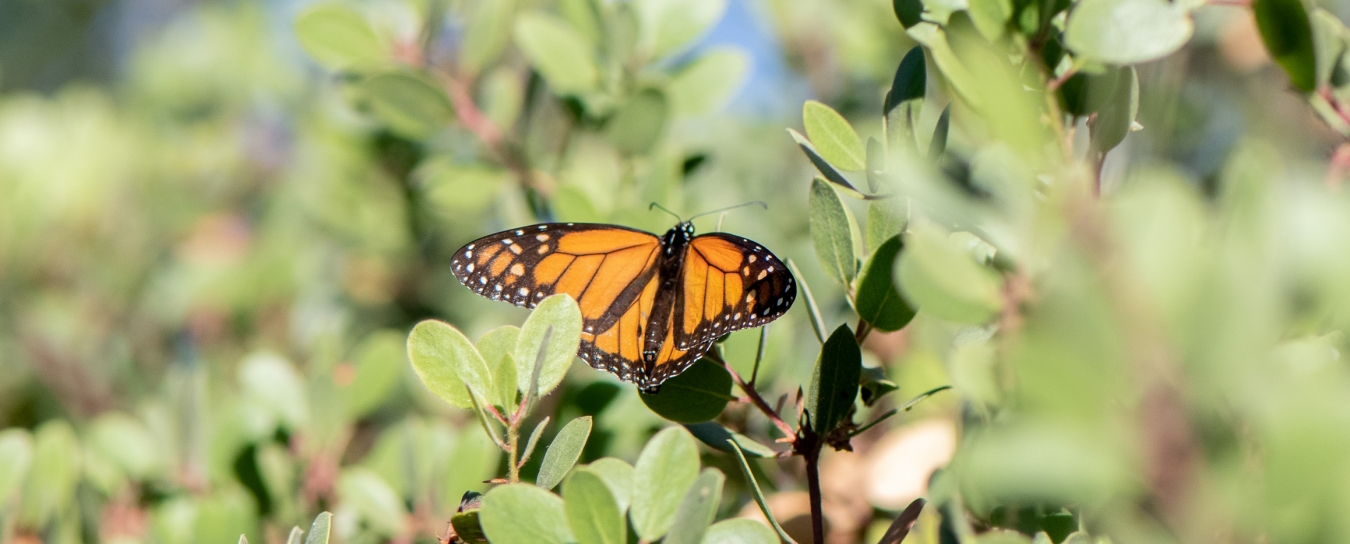
Invertebrates
See our handy guide to critters found in local homes and our Central Coast Butterfly FAQ. Browse the insects and other terrestrial arthropods we’ve identified. Check out local marine invertebrates, particularly bivalve mollusks and intertidal organisms.
- Anthropology
- Rocks & Fossils
- Invertebrates
- Vertebrates
- Botany
- Astronomy
- Fungi
- General
- Recently Asked
Mud dauber wasp nest?
I wondered if you think this could belong to a Mud Dauber Wasp. It's about 3-4 inches at the widest point. It seemed to get constructed very quickly, but I did not see the insect that built it. As well, I didn't see what exited it. I think it took about 2 weeks maybe for the first hole to appear, and then there was a new one about each day.
Curator Response
Hi Kevin,
I’m pretty sure you’ve guessed correctly that this is a nest of a Black-and-Yellow Mud Dauber (Sceliphron caementarium), a type of wasp in the family Sphecidae. These wasps are amazing and prolific architects, but unfortunately most of the architecture is invisible in a completed nest! The female gathers balls of mud one at a time from open, wet ground (such as a stream bank) and carries them to the nest site, usually located under a rock, a ledge, or the eave of a house. Here she constructs up to 25 hollow, 4-cm-long cylindrical cells out of this collected mud, provisioning each cell with paralyzed spiders. Once a cell is complete and stuffed with up to 40 spiders, she lays an egg in it and seals off the cell with a mud plug. After all are completed, she usually continues to add another mud layer over the top of the cylinders, effectively concealing them. The larvae develop as they consume the spiders, then pupate inside the cells. The holes in the nest in your photo are indeed the exit holes of newly developed adults.
Black-and-Yellow Mud Daubers occur throughout North America and have even been introduced to Europe a few times, where they’re now established. You can find the distinctive adult Black-and-Yellow Mud Daubers visiting flowers, where they obtain nectar to power their energy-intensive mud-daubing and spider-collecting activities. Note that our western populations of this species have a yellow petiole (that distinctive long, skinny “waist”), whereas eastern populations tend to have it black.
Stay curious,
Schlinger Chair & Curator of Entomology Matthew Gimmel, Ph.D.


